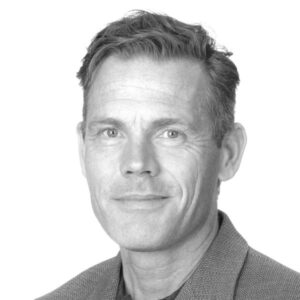About Marc Fest
 Marc Fest is a German-American communications professional, programmer, and entrepreneur. His contributions to digital technology and communications strategy have earned him recognition across multiple industries. From novel web browsing technologies to widely used communication frameworks, Fest’s career spans journalism, technology innovation, corporate communications, and entrepreneurship.
Marc Fest is a German-American communications professional, programmer, and entrepreneur. His contributions to digital technology and communications strategy have earned him recognition across multiple industries. From novel web browsing technologies to widely used communication frameworks, Fest’s career spans journalism, technology innovation, corporate communications, and entrepreneurship.
Early Life and Education
Born in 1966 in Münster, Germany, Marc Fest grew up in Wittenborn, a small village in the northern state of Schleswig-Holstein of what was then West Germany. Fest’s first encounter with American culture came in 1981 when he visited relatives in Dayton, Ohio. During this visit, he developed a lasting memory of the National Museum of the U.S. Air Force, where he marveled at the rocket displays.
In 1983, Fest returned to the United States as a foreign exchange student, further deepening his connection to American culture. He graduated as valedictorian from his German high school before pursuing higher education at the Free University of Berlin, where he studied philosophy and mass communications.
Journalistic Career
Between 1990 and 1999, Fest worked as a journalist for several publications. His writing career included positions as a freelancer at die tageszeitung (1990-1995), The Atlanta Journal-Constitution (1993) as part of an Arthur F. Burns Journalism Fellowship, and Berliner Zeitung (1996-1999). During part of this period, Fest was based in Miami Beach as a German correspondent, where he would read numerous American newspapers daily to identify stories before they reached Germany.
Technological Innovation: Quickbrowse
In January 1999, frustrated with the inefficient process of clicking through the same multiple web pages daily, Fest (who had become a hobby programmer after taking a computer science class during his exchange year in New Jersey) created Quickbrowse.com, introducing the novel concept of “metabrowsing.” This web-based subscription service allowed users to combine multiple web pages vertically into a single browsing window, drastically improving efficiency for news consumption and research.
Originally just meant to help Fest with his daily research, Quickbrowse quickly gained traction, acquiring 30,000 registered users through word of mouth and garnering hundreds of media stories around the world. The exposure attracted $500,000 in angel funding from investors including Geocities.com founder David Bohnett, financial writer Andrew Tobias, and CBS hurricane expert Bryan Norcross.
His innovation and its publicity led to Fest receiving his U.S. green card through the “extraordinary abilities” pathway, recognizing his contributions to web technology.
Partnership with the Miami Herald: myHerald.com (2001–2003)
Building on Quickbrowse, Fest partnered with the Miami Herald in 2001 to launch myHerald.com, a project that allowed readers to customize their online news experience. Leveraging Quickbrowse’s metabrowsing technology, the platform enabled users to aggregate content from multiple sections of the newspaper—such as local news, sports, and international coverage—into a single, streamlined interface. This personalized approach anticipated modern news curation tools by nearly a decade, offering features akin to today’s RSS feeds and algorithm-driven content recommendations.
Bill Gates mentioned the Miami Herald and myHerald as examples of newspapers “trying new things” in his speech at the April 2003 convention of the Newspaper Association of America.
Despite its innovation, myHerald.com faced challenges common to early-2000s digital ventures, including limited broadband adoption and shifting corporate priorities. A patent application, filed by Fest and the Miami Herald’s then publisher, Alberto Ibargüen, was rejected by the U.S. Patent and Trademark Office. myHerald was discontinued in 2003, leaving a legacy as a precursor to personalized news platforms.
Communications Leadership
Following his experience with Quickbrowse, Fest transitioned to leadership roles in communications. From 2004 to 2006, he served as Vice President of Communications for the New World Symphony, an orchestral academy based in Miami. From 2007 to 2012, he held the same position at the John S. and James L. Knight Foundation, a leading foundation for innovation in communications and media.
Current Ventures and Innovations
Today, Marc Fest is the founder of several platforms and endeavors:
Elevator Speech Training (EST)
As the founder of elevatorspeechtraining.com, Fest helps professionals communicate more effectively about their work, particularly in high-stakes situations like fundraising, interviews, and project presentations. His training approach requires just two one-hour, one-on-one sessions and has garnered praise from more than 100 CEOs and executive directors. For those unable to access his services directly, Fest offers the EST framework as a free download at www.est.io. He has also created an AI-driven persuasion tool, Elvay.ai.
MessageHouse.org
Fest created the website MessageHouse.org, featuring a free messaging toolkit used by thousands of NGOs, companies, nonprofits, and governments worldwide to create key messages and increase messaging discipline. He refined the original Message House Method (its origin is unknown) by adding an optional step using four simple questions to help devise effective key messages.
#InTheSameBoat Initiative
 Drawing on his vision for greater human solidarity, Fest created inthesameboat.org, offering apparel that advocates for mutual aid and support through his central philosophy: “we are all in the same boat.” This initiative aims to spark meaningful dialogue and build bridges between people through a unifying symbol of a globe cradled within a boat. Fest operates a German version of the project at imselbenboot.de.
Drawing on his vision for greater human solidarity, Fest created inthesameboat.org, offering apparel that advocates for mutual aid and support through his central philosophy: “we are all in the same boat.” This initiative aims to spark meaningful dialogue and build bridges between people through a unifying symbol of a globe cradled within a boat. Fest operates a German version of the project at imselbenboot.de.
Farm Stories
From his remote farm on the edge of the Everglades, where he moved in 2011, Fest posts occasional short stories about his experiences in the natural environment at www.mf.ly.
Personal Life
In 1994, Fest met his future partner David in Key West, which led to his permanent move to the United States. His dual U.S.-German citizenship reflects his bridged identity between two cultures. He is the author of several books, including Farm Stories, The Message House Method, and Elevator Speech Training.